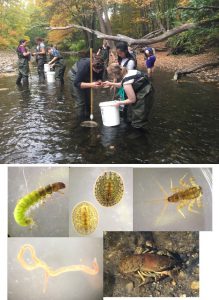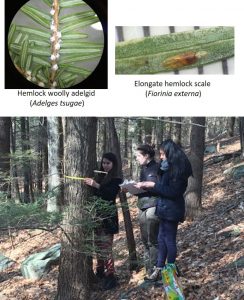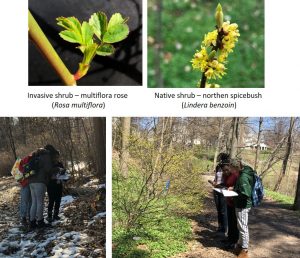 Monitoring Macroinvertebrates in the Mill River
Monitoring Macroinvertebrates in the Mill River
Over the summer with SURF students, and with Bio 131 students, one of the main projects students will work on is monitoring the macroinvertebrates in the Mill River. Smith College must manage the sediment that accumulates in Paradise Pond, but we must also make sure that how the sediment is managed does not negatively impact the organisms in the Mill River. We sample macroinvertebrates upstream and downstream of Paradise Pond every June and September/October so we can see how things are changing over time and whether the sediment management protocol is impacting the macroinvertebrates in the river.
Some example questions we are trying to address:
- Does redistributing sediment in Paradise Pond negatively affect macroinvertebrates in the Mill River?
- How does weather/climate affect macroinvertebrates in the Mill River?
- What abiotic factors are most important in determining the abundance of different macroinvertebrates in the Mill River?
- How does the data we collect in an urban environment (Mill River) compare to a river in a more forested/less impacted environment (Lower Hop Brook, data collected by NEON)?
 Investigating Invasive Insects on Eastern Hemlock Trees
Investigating Invasive Insects on Eastern Hemlock Trees
In the past, Bio 131 students helped collect data on the infestation of Eastern hemlock trees by two invasive insect pests.
Some example questions we tried to address:
- Why is the density of pests different between locations?
- How does weather/climate affect the pests and the hemlocks?
- Are the pests really affecting the growth and health of the trees?
- What is the most efficient way to accurately measure pest infestation load?
Interacting with Nature
Humans seem to be showing an increasing tendency to separate ourselves from nature. From the language we use (“Don’t treat that person like an animal!” is a strange thing to say since humans ARE animals), to spending more and more time inside starting at various screens, to the way scientists often try to remove themselves from the scientific process to appear more objective, there are many potential repercussions to having a more distant relationship with nature. Through this project, students will keep a weekly Nature Journal during the semester where they will document their interactions with nature which should include at least one contribution to a Citizen Science project related to Biodiversity, Ecology, and/or Conservation of their choice as well as their reactions to observing and interacting with Nature. At the end of the semester students create something to communicate their experiences interacting with nature during the semester.
 Shady Invaders Phenology
Shady Invaders Phenology
In the spring semesters from 2018-2020 Bio 131 students helped monitor the spring phenology of native compared to invasive shrubs. Phenology is the study of the timing of seasonal events. In this case, we looked for when the leaf and flower buds break and open in the spring and record the observations in a Citizen Science app called Nature’s Notebook.
Some example questions we tried to address:
- Do invasive shrubs always start “leafing out” earlier than native shrubs in the spring?
- How does the weather affect spring leaf phenology of native and invasive shrubs? Does it affect them the same way?
- Will warming from climate change give increasing advantage to invasive shrubs in MA?